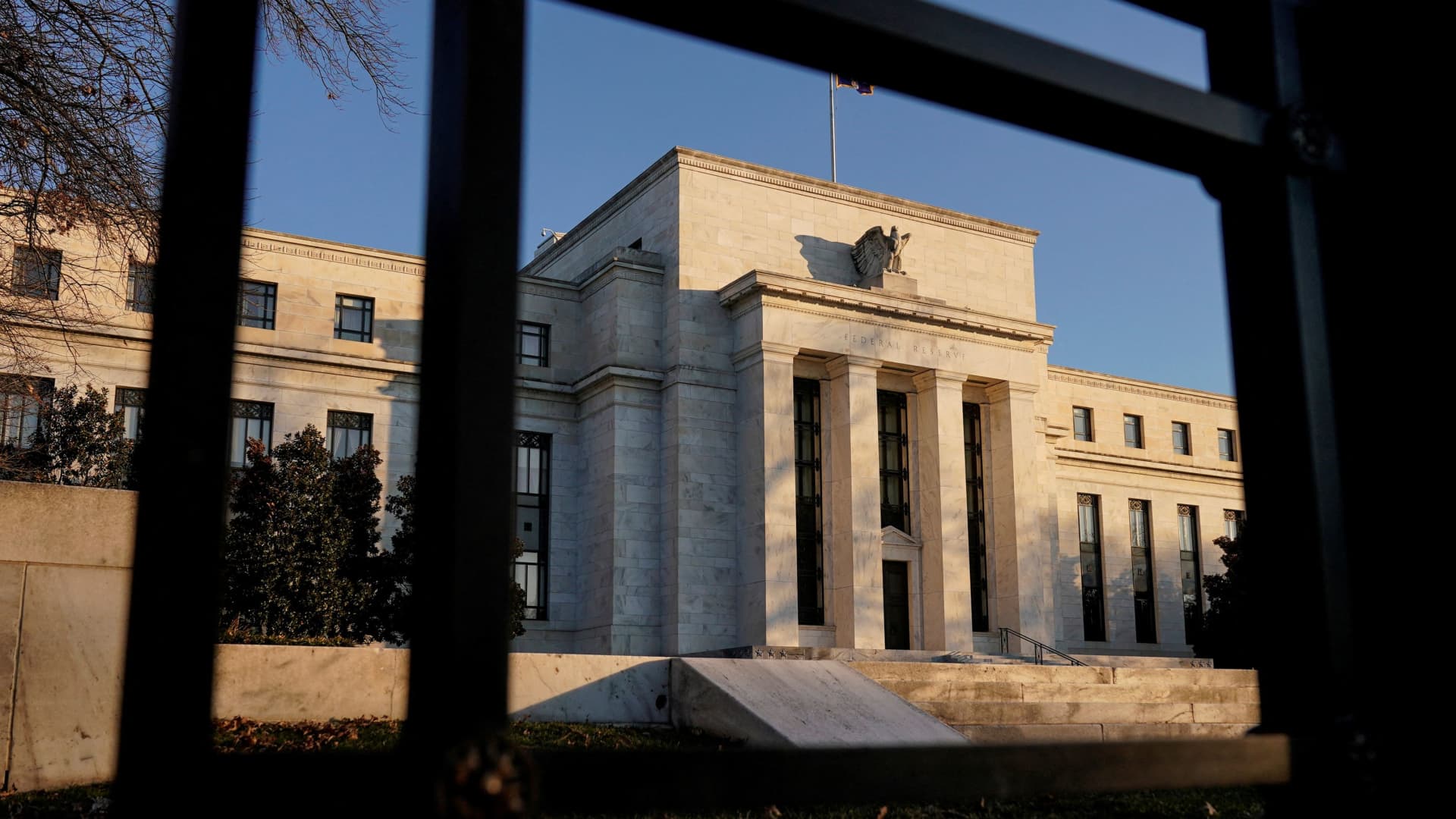The Federal Reserve Building in Washington, D.C.
Joshua Roberts | Reuters
The Federal Reserve announced Wednesday it will leave interest rates unchanged as President Donald Trump‘s tariff policies weigh on economic growth.
Although inflation receded last month, an escalating trade war threatens to hike prices on consumer goods going forward.
“Tariffs on aluminum, steel and oil are essential elements to production across a wide range of products,” said Brett House, an economics professor at Columbia Business School. “Those price increases are going to ripple more widely across the American economy.”
National Economic Council director Kevin Hassett recently warned of “some uncertainty” in the weeks ahead because of the United States’ tariff agenda.
The inflation risk from tariffs ensured the central bank would take a more cautious approach, according to House. “Greater uncertainty in the world means the Fed is more predictably in a wait-and-see mode,” he said.
More from Personal Finance:
Consumer outlook sinks as recession fears take hold
Here’s the inflation breakdown for February 2025
This step is ‘really important’ for home sellers in 2025
The federal funds rate sets what banks charge each other for overnight lending, but also influences many of the borrowing and savings rates Americans see every day.
When the Fed hiked rates in 2022 and 2023, most consumer borrowing costs quickly followed suit. Even though the central bank began to lower its benchmark rate at the end of last year, consumer rates are still elevated, with credit card annual percentage rates down only slightly from an all-time high.
“The pressure on household budgets is unrelenting,” said Greg McBride, chief financial analyst at Bankrate.com.
As the federal funds rate comes down, consumers may see their borrowing costs decrease as well, making it cheaper to borrow money to purchase a house or a car.
But even with the Fed on the sidelines for now, consumers struggling under the weight of high prices and high borrowing costs could see some relief, experts say. Already, rates for mortgages, auto loans and credit cards are edging lower.
Credit cards
Most credit cards have a variable rate, so there’s a direct connection to the Fed’s benchmark.
Even though the central bank held rates steady at the last few meetings, average annual percentage rates have eased. The average credit card rate is down to 20.09%, from 20.27% at the start of the year, according to Bankrate. That is on the heels of the rate cuts that already went into effect.
“Credit card rates have fallen from their 2024 record highs,” said Matt Schulz, chief credit analyst at LendingTree. “March was the sixth straight monthly decline, but the decreases have slowed as Fed rate cuts get further back in the rearview mirror.”
Mortgages
Because 15- and 30-year mortgage rates are fixed, and largely tied to Treasury yields and the economy, those rates have also been trending lower.
Uncertainty over tariffs and worries about a possible recession have dragged down consumers’ outlook. “Mortgage rates are falling because of concerns about economic weakness,” McBride said.
However, “that’s not the type of environment that’s going to provide a sustainable boost to the housing market,” he added.
The average rate for a 30-year, fixed-rate mortgage is now 6.78% as of March 19, while the 15-year, fixed-rate is 6.24%, according to Mortgage News Daily.
Auto loans
Although auto loan rates are fixed, payments are getting bigger because car prices are rising, in addition to pressure from Trump’s trade policy.
“Sticker prices are still really high and tariffs will only drive those prices higher,” McBride said.
Auto loan rates have also backed down from recent highs but are still up year to date. The average rate on a five-year new car loan is now 7.2% as of the week ended March 14, while the average auto loan rate for used cars is 11.3%, according to Edmunds. At the end of 2024, those rates were 6.6% and 10.8%, respectively.
Student loans
Federal student loan rates are fixed, as well, so most borrowers are somewhat shielded from Fed moves and recent economic turmoil.
Undergraduate students who took out direct federal student loans for the 2024-25 academic year are paying 6.53%, up from 5.50% in 2023-24. Interest rates for the upcoming school year will be based in part on the May auction of the 10-year Treasury note.
Private student loans tend to have a variable rate tied to the prime, Treasury bill or another rate index.
Savings
On the upside, “savings rates really haven’t changed all that much, that’s the good news,” McBride said. “Savings rates are still at attractive levels and the top yields are still well in excess of inflation.”
While the central bank has no direct influence on deposit rates, the yields tend to be correlated to changes in the target federal funds rate.
Top-yielding online savings accounts currently pay 4.4%, on average, according to Bankrate. Although that’s down from roughly 5% last year, it is well above the annual inflation rate of 2.8%.
Subscribe to CNBC on YouTube.


 Economics1 week ago
Economics1 week ago
 Personal Finance6 days ago
Personal Finance6 days ago
 Personal Finance4 days ago
Personal Finance4 days ago
 Personal Finance4 days ago
Personal Finance4 days ago
 Economics6 days ago
Economics6 days ago
 Economics5 days ago
Economics5 days ago
 Economics5 days ago
Economics5 days ago
 Finance4 days ago
Finance4 days ago












